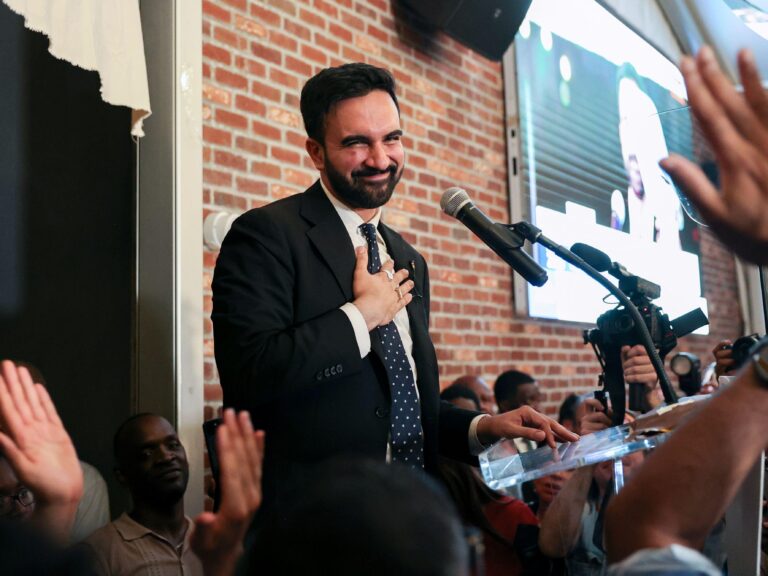As the Democratic Party grapples with its identity and strategy ahead of the next presidential election, a new figure has emerged at the forefront of the internal debate: Zohran Mamdani. Heralded by some as a dynamic progressive force capable of invigorating the party’s base, Mamdani’s rise is simultaneously exposing deep divisions within Democratic ranks. His appeal to younger, more left-leaning voters contrasts sharply with establishment factions wary of contentious approaches, raising urgent questions about the party’s path to defeating former President Donald Trump. This article explores how Mamdani’s ascent is reshaping Democratic politics in New York and beyond, highlighting the challenges and opportunities in crafting a unified roadmap to victory.
The Emerging Influence of Zohran Mamdani in Democratic Politics
Zohran Mamdani has rapidly become a pivotal figure in the evolving landscape of Democratic politics, advocating for bold progressive policies that challenge the party’s traditional centrist framework. His platform, emphasizing affordable housing, climate justice, and criminal justice reform, resonates deeply with younger and more diverse constituencies. This shift is stirring debate within the party as activists and strategists weigh the risks and rewards of aligning with Mamdani’s uncompromising stance against entrenched Democratic institutions.
Behind the controversy lies a broader divide manifested in strategic priorities and electoral calculations. Supporters argue that Mamdani embodies a new generation of leadership necessary to reclaim lost ground in key districts. Meanwhile, critics warn that his confrontational style may alienate moderate voters crucial for statewide and national victories. The Democratic debate over inclusivity versus electability is highlighted in the following summary:
| Aspect | Progressive Camp (Mamdani) | Establishment Wing |
|---|---|---|
| Policy Focus | Housing, Climate, Justice Reform | Economic Stability, Incremental Change |
| Electoral Strategy | Mobilize Youth, Base Energization | Appeal to Moderates, Swing Voters |
| Party Approach | System Overhaul | Coalition Building |
- Coalition Building vs. Radical Change: How Mamdani’s approach challenges established norms.
- Voter Engagement: The youth and minority voter surge as a counterbalance.
- Electoral Risks: Potential fractures in unity could impact mid-term and presidential races.
Challenges Within the Democratic Party Amidst Rising Progressive Voices
The Democratic Party finds itself at a crossroads as progressive leaders like Zohran Mamdani gain prominence, challenging the established centrist order. This ideological divide has sparked intense debates over policy priorities and electoral strategies, with some party members advocating bold reforms on housing, climate, and social justice, while others prioritize pragmatic compromise to retain broad voter coalitions.The rise of these progressive voices signals a shift in the party’s identity and raises questions about unity ahead of critical elections.
Key points of contention include:
- Policy Direction: Whether to pursue sweeping progressive legislation or incremental changes favored by moderates.
- Electoral Tactics: Balancing grassroots mobilization with traditional campaign approaches.
- Party Leadership: How to integrate new voices without alienating longstanding Democratic leaders.
| Faction | Core Focus | Strategic Goal |
|---|---|---|
| Progressives | Systemic Reforms | Mobilize Youth & Activists |
| Moderates | Pragmatic Governance | Maintain Broad Electorate |
| Establishment | Party Stability | Unify Diverse Views |
Strategic Lessons for Democrats to Counter Trump’s Political Dominance
Democrats are at a critical crossroads in redefining their approach to counteract the entrenched influence of Trumpism. The unexpected rise of Zohran Mamdani, a progressive iconoclast, has exposed deep fissures within the party, notably between moderate factions and grassroots activists.This dynamic suggests that unity alone will not suffice; strategic recalibration is required. Key lessons emerge from this scenario:
- Embrace bold messaging: Mamdani’s unapologetic stance on social justice and economic reform resonates with a younger, diverse electorate hungry for transformative change.
- Prioritize local engagement: Suburban and urban districts demand tailored outreach that reflects unique community needs, moving beyond generic national narratives.
- Leverage digital organizing: Harnessing social media with authentic voices can rebuild trust and mobilize skeptical voters disillusioned by traditional politics.
However, this blueprint comes with challenges, as Democrats must avoid alienating centrist voters wary of rapid shifts. The following table outlines the perceived strengths and weaknesses of differing Democratic approaches amid the Trump era:
| Approach | Strengths | Weaknesses |
|---|---|---|
| Moderate Centrism | Appeals to swing voters, stability | Seen as status quo, lacks excitement |
| Progressive Activism | Energizes base, pushes bold reforms | Risks fracturing party, alienates moderates |
| Hybrid Strategy | Balances change with pragmatism | Can appear inconsistent or vague |
Building Unity and Broad Coalitions to Secure Future Electoral Success
Amidst the charged atmosphere within the Democratic Party, proponents of unity emphasize the urgent need for building broad, diverse coalitions that can withstand both internal discord and external challenges. The rise of figures like Zohran Mamdani, emblematic of a new progressive energy, has unearthed fault lines between established party moderates and grassroots activists, highlighting the complexity of maintaining solidarity. Strategic collaboration across ideological divides is seen as essential, not just for electoral victory, but for long-term democratic resilience.
Experts recommend focused efforts on issues that unite various factions, including:
- Expanding voting rights and access
- Addressing economic inequality with pragmatic solutions
- Championing climate policy that appeals to multiple constituencies
- Strengthening community-based engagement
These priorities offer a foundation for creating a coalition that transcends factionalism, with both progressive champions and moderate leaders recognizing the stakes in the fight against Trump-era divisiveness and its echoes in current political battles.
Future Outlook
As the Democratic Party grapples with internal divisions and evolving political landscapes, the rise of Zohran Mamdani underscores the challenges and opportunities facing its progressive wing. Mamdani’s ascent signals a potential shift in strategy, reflecting broader debates over the party’s future direction and electoral viability. Whether this new momentum will unify Democrats or deepen existing fractures remains to be seen, but it is clear that the path to beating Donald Trump will require navigating these complex dynamics with both pragmatism and vision.




